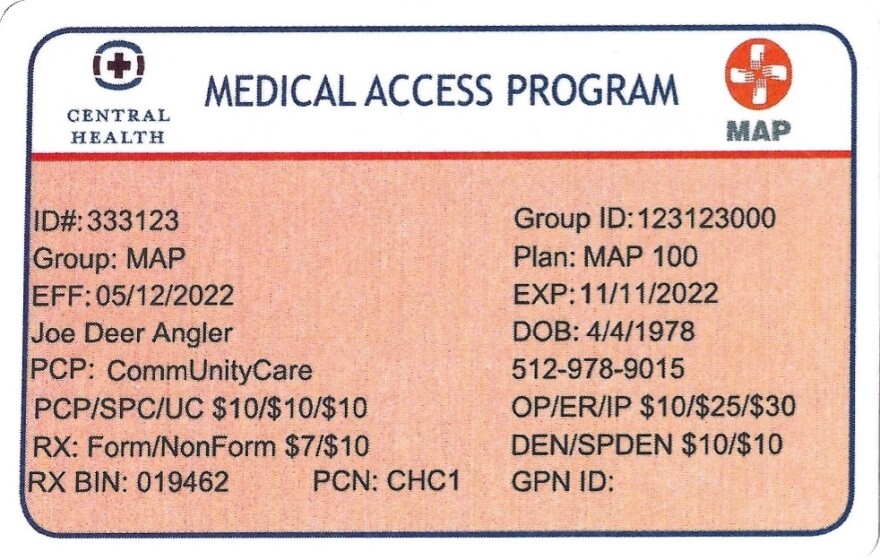As Austin's population grows, so do concerns about the number of uninsured people struggling to get health care. According to the city, 20% of people under the age of 65 don't have health insurance in Travis County. Many of them will rely on Central Health for medical care.
The hospital district is funded by taxpayer money. As Central Health finalizes a proposed more than $300 million budget for the next fiscal year, residents have basic questions: What exactly is Central Health and how are local tax dollars reaching the underinsured?
What is a hospital district?
A hospital district refers to an area or district, like Travis County, where people agree to tax themselves with the purpose of raising money to provide medical care to those who can't afford it.
What is Central Health?
Central Health is Travis County’s hospital district. Voters approved its creation in 2004, and Central Health began serving patients a year later. Central Health began providing care by creating partnerships with health care providers and paying them to treat low-income patients. MHMR (now Integral Care), Seton Healthcare Family (now Ascension Texas) and some City of Austin clinics, including Brackenridge Hospital, were among its first providers.
In response to community requests, Central Health is expanding from the partner providers to add clinics set up specifically for patients enrolled in its health care programs.
The Del Valle Health & Wellness Center and the Hornsby Bend Health & Wellness Center are slated to open next year and are expected to include primary care, dental, mental health and a pharmacy under one roof.
A specialty care clinic, Rosewood Zaragosa, is expected to open in East Austin in 2023 with specialists in neurology (brain), nephrology (kidney), cardiology (heart), gastroenterology (digestive system), podiatry (feet) and pulmonology (windpipe to lungs).
Who does Central Health serve?
As of July 1, Central Health reported serving 72,017 people in Travis County.
Central Health serves people who are in need of health care and don’t qualify for Medicaid, CHIP and Medicare due to financial or citizenship status. To qualify, a person must be at or below 200% of the federal poverty level. In 2022, for example, that means:
- A single person earning $2,265 or less a month
- A family of two earning $3,052 or less a month
- A family of three earning $3,838 or less a month
- A family of four earning $4,625 or less a month
People at 100% of the poverty level — those who earn half the amounts above — could qualify for more benefits.
How does Central Health work?

Central Health has a program called Medical Access Pass or MAP. There are two levels of health coverage a person or family can receive, based primarily on the applicant's most recent 30-day income. The two levels are called MAP and MAP Basic.
Currently MAP and MAP Basic members can see primary care doctors, specialists and dentists, and get prescription medications through Central Health’s 205 partner providers. Depending on income levels and the type of medical provider seen, patients' visits could be free or cost from $10 to $55.
To apply, patients can fill out a form on Central Health’s website or call 512-978-8130. How much money does Central Health get from taxpayers?
The majority of Central Health’s funding comes from Travis County property taxes. Central Health’s proposed 2023 budget would collect 9.87 cents per $100 of assessed property value, which is about $282 million from taxpayers. So, for example, if you own a home valued at $500,000, you would be contributing about $500 a year to Central Health at the rate proposed.
Central Health also receives money from lease agreements, a tobacco settlement and other programs and grants, bringing its proposed budget up to about $301 million.
Where will the money go?
In Central Health’s proposed "working" budget for 2023, close to $278 million is allotted for patient care, while more than $21 million would go toward administrative costs.
Is taxpayer money serving the most vulnerable?
Central Health’s previous budgets and accounting methods have been met with criticism, primarily because of a lack of detail regarding spending. Critics have asked for a line-item accounting explaining how each health provider is using taxpayer money and what services are being provided. They also want to know if Central Health patients have access to the same type of care as patients with private insurance.
For this reason, Travis County commissioners have ordered an independent audit. A start date has not been set, as the instructions on how and who should conduct the audit are still being ironed out. Central Health expects the independent audit to take place next year.
Central Health has held a series of community conversations to share the proposed 2023 budget with the public. Several of these can be reviewed on its Facebook page:
What’s next?
Central Health will present the proposed budget to Travis County commissioners for a vote on Sept. 20. There are a few more discussions the public can attend before the vote. Check Central Health's website for details on the time, location and virtual option to attend each meeting.
Wednesday at 5 p.m. — Public hearing, Central Health, 1111 E. Cesar Chavez St.
Sept. 7 — Central Health's board of managers is scheduled to vote on the budget and the proposed tax rate.
Sept. 8 — The proposed budget then goes before the Travis County Commissioners Court.
Central Health’s 2023 fiscal year begins Oct. 1.






